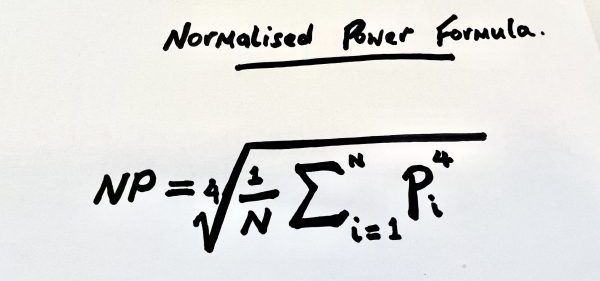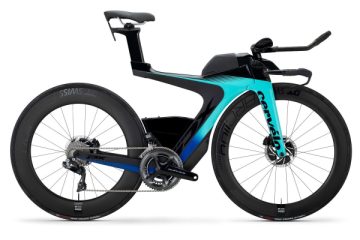I love performance data for my training. A full on data geek. So when I spotted normalized power in the list of stats from my cycling it peeked my interest. But what is normalized power? I have been following up with my network including coaches, cyclists and even data scientists. It turns out the normalized power formula is a real head scratcher. I am sure this article will help you understand normalized power better and how you can use it for cycling.
Content Guide
- What is Normalized Power?
- Discovering your Normalized Power scores
- How is Normalized Power calculated?
- What is a good Normalized Power Score?
- Is Normalized Power better than Average Power?
What is Normalised Power?
Normalized power is a metric for measuring the amount of effort you expend while cycling. It is different to average power and a more scientific (and complex) measure to try and give a true view of your effort. It delivers a value in watts. Watts are something you are hopefully familiar with and a measure of the force delivered from pedalling your bike.
Average power as the name would suggest takes a series of readings through your ride and averages these values out. This is not a continuous feed of power data but generally a data extract every 3 seconds. Normalized power attempts to use these data outputs and remove the variability of a moment of data capture. Namely if you are coasting and have a zero power output for a second this may be when the extract is taken. This then skews your average power score.
Normalized power does not just remove every zero reading though. By taking a series of readings and reducing the emphasis of a particular outlier value it gives a closer version of the truth.
Discovering your Normalised Power Score
Normalized Power was developed by Dr Andrew Coggan originally and trademarked by TrainingPeaks. You can now get the data wider than this and I use Garmin Connect to get the information under my cycling activities. It relies on some form of a power meter or a smart turbo trainer. I pull the data back from my Elite Direto smart turbo trainer.
If you are after a smart turbo trainer read my round up of the 5 best smart turbo trainers to buy. A great upgrade if you are interested in getting normalized power readings.
How to calculate Normalized Power
Unfortuntely this is complicated but the Maths behind it is as follows. I will try and explain in terms that you and I might understand.
- Take the fourth power of the power data for each second of the workout.
- Calculate the average of these fourth powers.
- Take the fourth root of the average.
- Take a series of average power readings for your ride (every 3 seconds as an example)
- Raise all of these average power values to the 4th power (i.e. x4). Multiplying a reading to the 4th power means you times it by itself 3 time, e.g. 100 x 100 x 100 x 100. This equals 100 million.
- Calculate the average of raised values.
- Take the 4th root of this calculated figure that will likely be a really large value. In this very simple example it reduces it back to 100.

In the calculation above the values mean:
- NP is the Normalized Power.
- N is the total number of data points (seconds in the workout).
- Pi is the power in watts at each data point.
The idea behind Normalized Power is that it gives more weight to higher intensity efforts and smooths out the impact of short, high-intensity bursts that may not be reflected in average power.
What is a good Normalized Power Score?
The question of what is a good normalized power score is a very loaded question. This will depend on your FTP (Functional Threshold Pace) or your watts per kilo performance. It also will depend on what duration you are cycling and how you are cycling. If you wanted you can cheat your way to a high NP score but in my view, what is the point in that.
For any regular cyclist watt per kilo numbers normally start from about 2.0 w/kg and head upwards. The upper threshold over a distance ride is up to 5.0 w/kg for mere mortals. This then needs to be translated into your weight. I weigh 80 kilos and my target is normally 2.5 w/kg so this translates to 200 watts. As I am a triathlete rather than a pure cyclist with the swim being my strength I am at the lower end here. With more regular cycling I would like to be achieving more than 240watts with a 3.0 w/kg.
So, it is impossible to give a generalist number for what is a good normalized power value. Taking into consideration a starting position of your watts per kilo anyone doing more than 3.0 w/kg will have a good normalised power score.
Comments are open. Please shout me down if you disagree with my view. My stats are included in the image below for my normalized power alongside other power metrics.

Is Normalized Power better than Average Power?
Cycling with metrics that help you track improvements I find helpful to maintain motivation. I use normalized power alongside average power watts after each ride. I also take note of my maximum effort output and heart rate for zone monitoring. Do I really monitor this closely while riding? Not really but as I compare rides over time this is useful to use to see how my fitness is changing. Or not.
I would say that using a formula like normalized power has more chance of accuracy with a volume of data points. With that in mind any really short rides are unlikely to give much accuracy. If you are cycling for more than 30 minutes you have better chance of creating a range of data points to be processed.
For steady rides, Normalized Power and average power can be almost identical. But the more variable the ride, the greater the difference between average power and Normalized Power. Here the figure can be more useful.
If you are interested in further calculations of effort look at VO2 max. Read our guide to VO2 Max and why it is important for atheletes.



3 Comments
Hertha · February 27, 2024 at 2:58 am
Been looking to get an answer on this! Makes sense but I think I will still rely on the average power value.
Megan · February 9, 2024 at 7:07 am
Useful post. I’ve been using average power to now and ignored normalized power. Could you help with some info around Intensity Factors? I see that as well and no real idea how to use it.
Billy · February 9, 2024 at 9:27 am
Hi Megan. Thanks for the comment. We’ve got intensity factor on the backlog of new posts to work on but will move that up the priority list as there is clearly an interest out there.